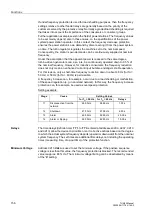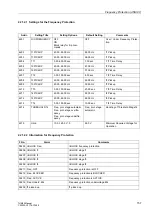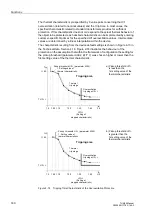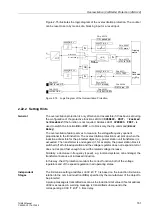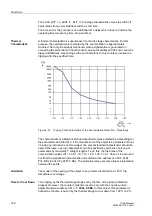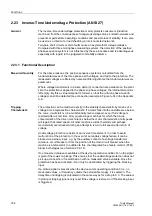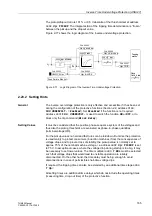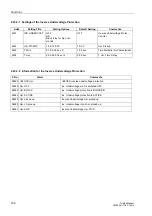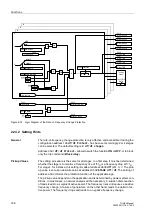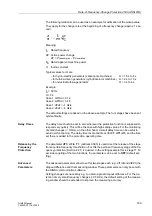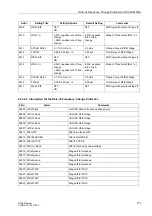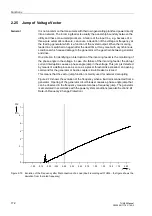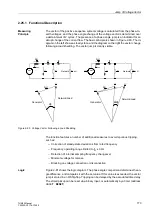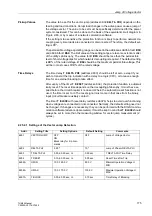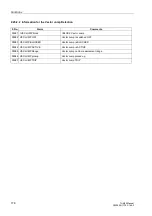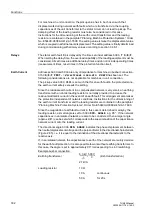
Rate-of-Frequency-Change Protection df/dt (ANSI 81R)
169
7UM62 Manual
C53000-G1176-C149-3
The following relations can be used as an example for estimation of the pickup value.
They apply for the change rate at the beginning of a frequency change (approx. 1 sec-
ond).
Meaning:
f
N
Rated frequency
∆
P Active power change
∆
P = P
Consumption
– P
Generation
S
N
Rated apparent machine power
H
Inertia constant
Typical values for H are:
– for hydro-electric generators (salient-pole machines)
H = 1.5 s to 6 s
– for turbine-driven generators (cylindrical-rotor machines)
H = 2 s to 10 s
– for industrial turbine-generators
H = 3 s to 4 s
Example:
f
N
= 50 Hz
H = 3 s
Case 1:
∆
P/S
N
= 0.12
Case 2:
∆
P/S
N
= 0.48
Case 1: df/dt = –1 Hz/s
Case 2: df/dt = –4 Hz/s
The default settings are based on the above example. The four stages have been set
symmetrically.
Delay Times
The delay time should be set to zero wherever the protection function is supposed to
respond very quickly. This will be the case with high setting values. For the monitoring
of small changes (< 1Hz/s), on the other hand, a small delay time can be useful to
avoid overfunctioning. The delay time is set at address
, and the time
set there is added to the protection operating time.
Release by the
Frequency
Protection
The parameter
(address
) is used to set the release of the stage
from a certain frequency threshold on. For this the pertinent frequency stage of the fre-
quency protection (Section 2.21) is queried. In the setting example this is stage f1. To
exclude coupling of the two functions, the parameter can be set to OFF (default set-
ting).
Advanced
Parameters
The advanced parameters allow to set for two stages each (e.g. df1/dt and df2/dt) the
dropout difference and the measuring window. These parameters can only be set with
the DIGSI communication software.
Setting changes are necessary e.g. to obtain a great dropout difference. For the de-
tection of very small frequency changes (<0.5 Hz/s), the default setting of the measur-
ing window should be extended to improve the measuring accuracy.
df
dt
-----
–
f
N
2 H
----------
∆
P
S
N
--------
⋅
=


